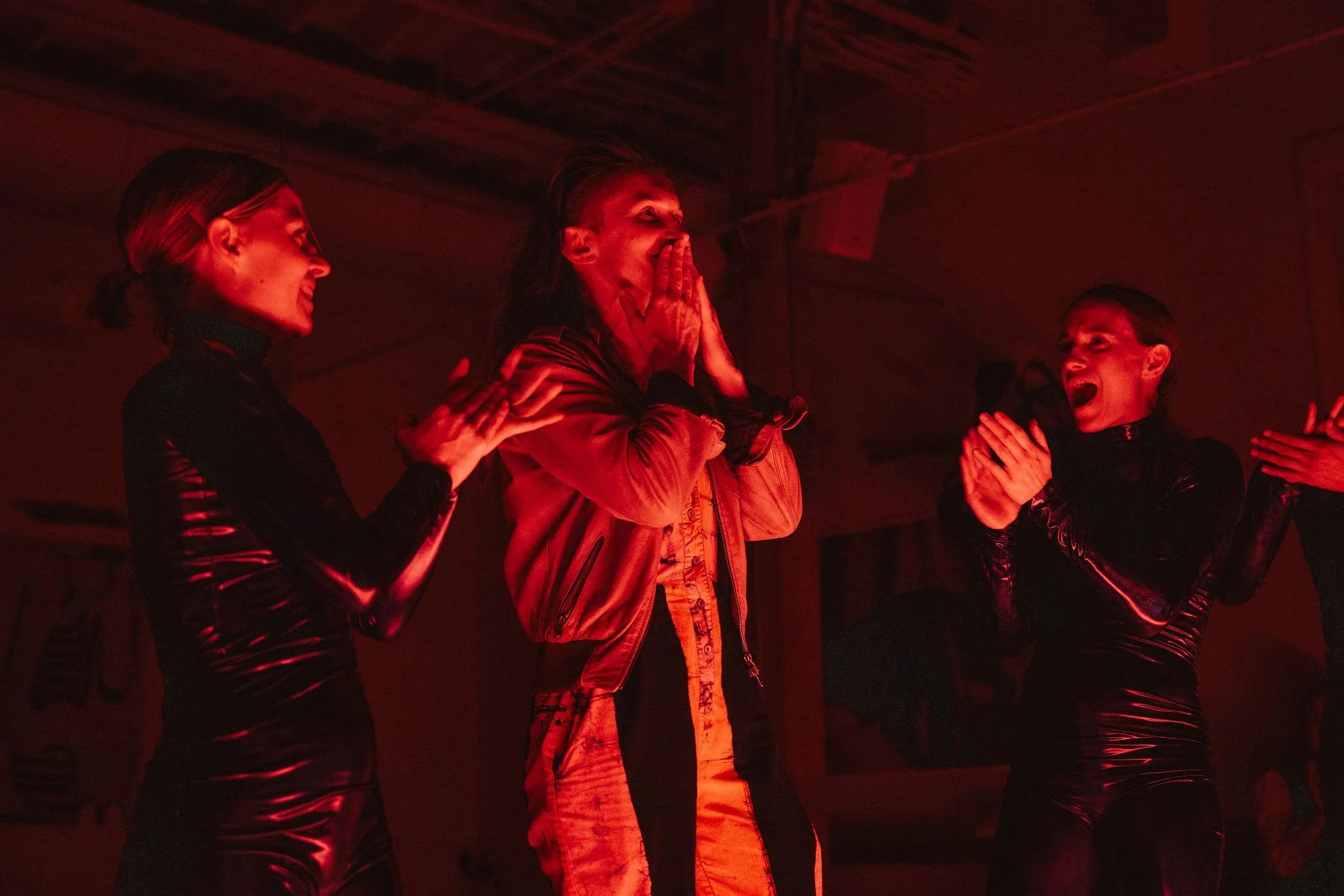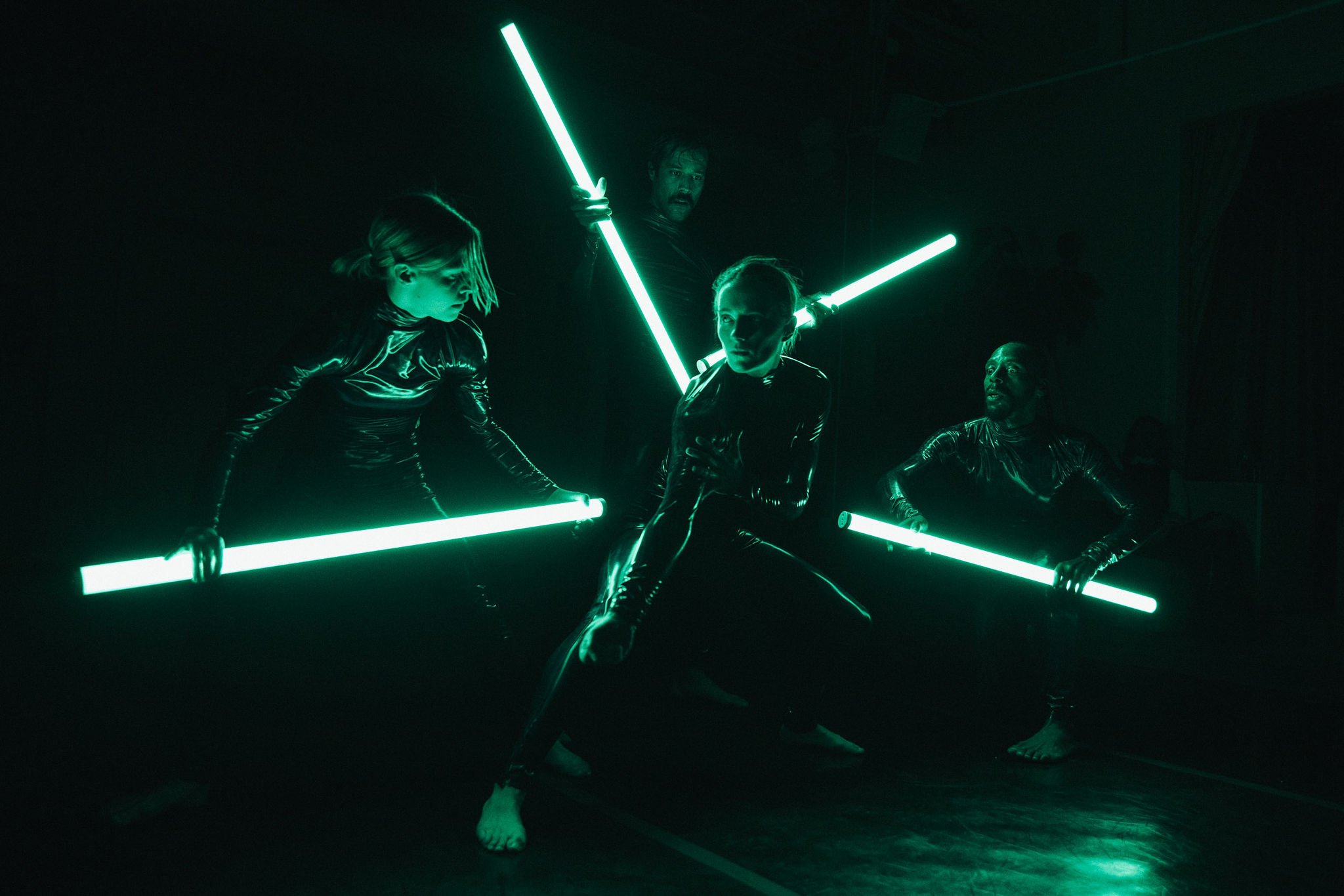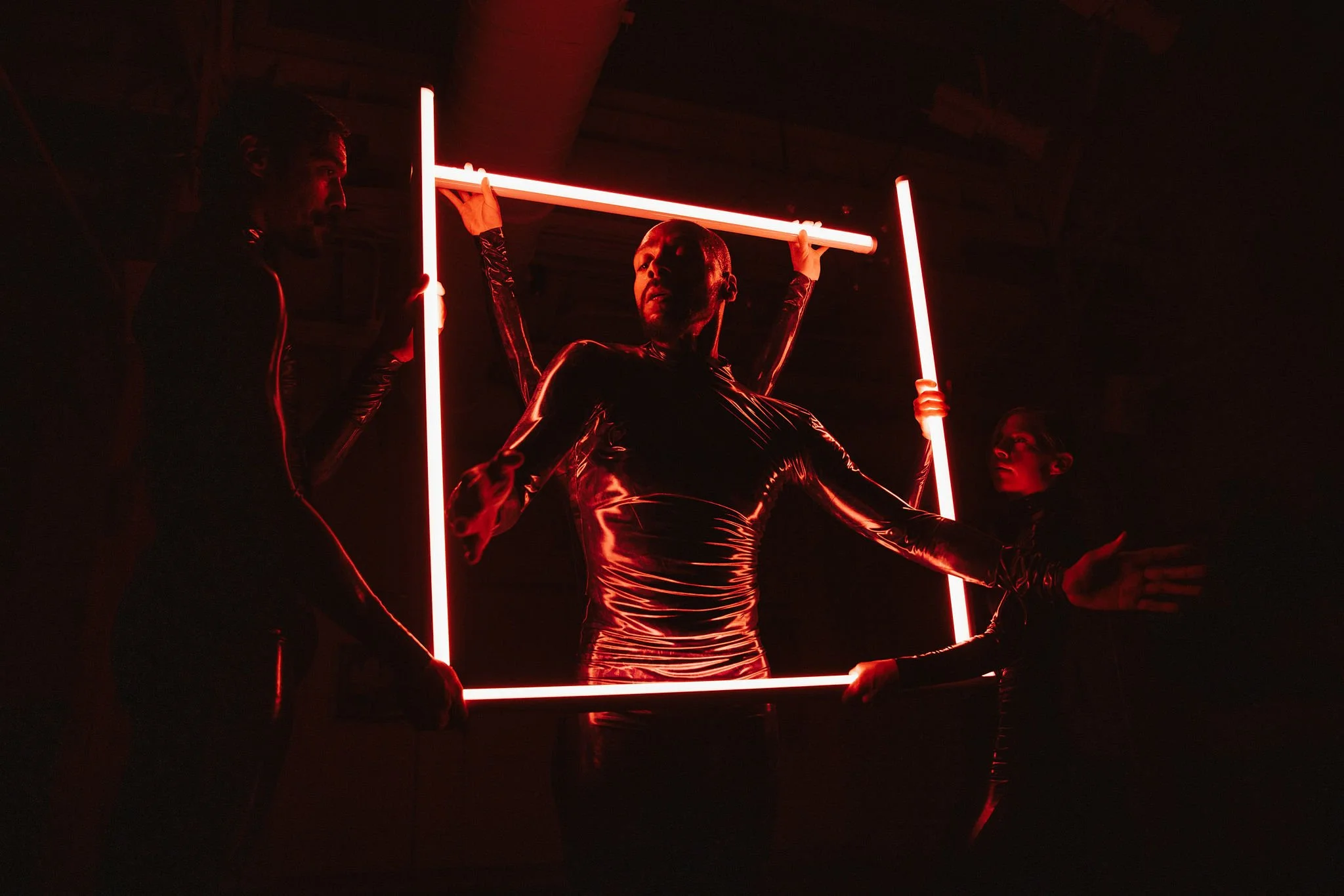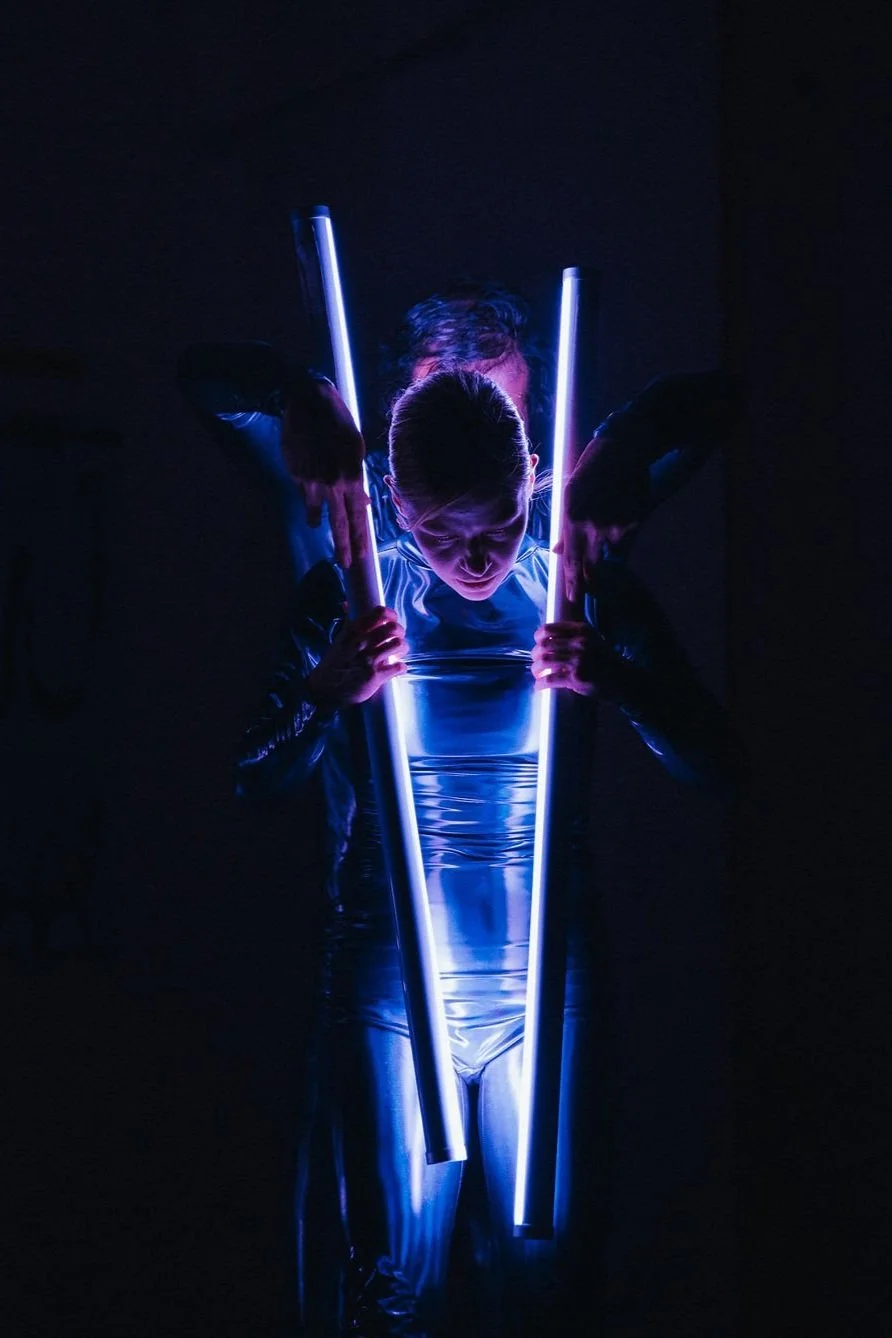Story By: Jayla Jackson
Photography By: Daniel Meigs
Featuring: Banning Bouldin, New Dialect
Nashville Design Week 2024
Designing a New Dialect
Rewinding back to 2023, Tracey Ford of EOA Architects and Banning Bouldin of New Dialect teamed up to submit a proposal for a Nashville Design Week event. In reviewing the “Design for Dance” application, our content curators gave a resounding “yes” to the submission, so this new project could have a platform to experiment. New Dialect leaned into the idea of dancers creating their own lighting design in real time and this research was unveiled during Nashville Design Week at Soho House. The feedback sparked the performance’s evolution into an evening-length theatrical production called, 21 Yeses, which premieres just one year after its inception this November.
Nashville Design Week invited Banning back to share the story of how it all began and what the future holds for 21 Yeses.
Banning Bouldin after “Design for Dance” in 2023
Jayla Jackson - Can I start by asking, where does the name New Dialect come from?
Banning Bouldin - That’s a great question. So philosophically for me, dance and language are inextricably linked. I believe that all movement is body language, and that new movement languages and dance styles can be created when we share our own body languages and influences with each other. When individual dancers come together to improvise and as a group choose to repeat specific physical choices, this process over time contributes to the creation of new movement dialects. So the name New Dialect refers to this search for body languages. It’s a search for many new dialects, not just one.
Jayla - What got you into this kind of dancing? Because, of course, it sounds like a step up from your average form of contemporary dance.
Banning - I wouldn't say it’s a step up necessarily. I know many contemporary dancers around the world who are investigating their own improvisations, what their movement style is, and what contributions they’re interested in making through collaborations with other like-minded artists. For me personally, as both a dancer and a choreographer, I want to create and curate environments with other dancers who also like working collaboratively, and who are interested in research and experimentation. In the case of 21 Yeses, for example, I am actively researching the intersection of kinetic sculpture, lighting design, and choreography with a team of four dancers.
A snapshot from Design for Dance
Jayla - What drew you to the addition of lights? That's what I'm really curious about, because that's fascinating. I’ve never seen anything like it before your “Design for Dance” event last year.
Banning - I had never seen anything like it before either, ha ha.
We have the great advantage with New Dialect of knowing many wonderful artists across the fields of dance, design, and production. My creative partner, Teten, and I have a great relationship with a production designer, Michael Brown, who does a lot of lighting and visual effects design for bands like Bon Iver, the National, and Death Cab for Cutie. He comes from a totally different world than we do and uses entirely different instruments and fixtures for productions than what we typically use in theatrical contexts.
We first had an opportunity to collaborate with Michael a few years ago to create an outdoor installation at Cheekwood. It was such an elucidating process for us we knew we wanted to work with Michael again. So when Tracey Ford and EOA Architects approached us with their interest in supporting us to create an event for Design Week, immediately, Teten and I were like, “How can we take what we learned from Michael and use this as an opportunity to expound on my interest in working with functional objects sculpturally, but in a way that also creates the lighting design?” It was a real culmination of different relationships and ideas that we had been marinating on together for a few years. Design Week was the right time and context for us to implement them. Bringing in these wireless LED tube lights that are remotely programmable really encouraged me to expand on my history of using different physical materials in sculptural ways, and added a whole new dimensionality to that research with the lighting design.
Jayla - For sure, and let's dive a little bit into that. Could you just tell me about your “Design for Dance” event for NDW last year and how that experimental show led to being on a bigger stage now?
Banning - So Tracey Ford and EOA Architects have been hugely supportive. Tracey's a big dance lover, and I've always felt really supported by her. She's an architect, very involved in Nashville Design Week, and she also sees, in my choreography, a real interest in architecture and sculpture design. She's the one who invited us to create something for Design Week. We also have a wonderful partnership with Metro Parks and Recreation, and they provided a studio residency for us to experiment with the technology of wireless, remote-controlled tube lights to see how we could choreograph the movement and the lighting design at the same time, to see if the dancers could, in effect, create their own light.
After we got great feedback from the first installation at SoHo House, we started thinking, how can we amplify the experience that we were having by drawing in more concert lighting design elements to further erase the line between audience and performer? So we talked to South Arts, a regional arts funder, about the possibility of expanding this work, and they were really excited about the idea. We reached out to Tennessee Performing Arts Center because their president, Jennifer Turner, is doing such wonderful things to promote dance and the future of dance in our city. It was really just the confluence of some wonderful partnerships that allowed us to transform a Design Week installation at SoHo House into an evening length production at Tennessee's largest performing arts theater.
A snapshot from Design for Dance
Jayla - That's incredible. What pre-production challenges are you facing or forsee facing?
Banning - I have a fluency in working with lighting design elements that are more traditional for theatrical stage environments. So it's been a big learning curve understanding concert lighting design elements and trying to figure out which fixtures are going to make the most sense in this non-traditional context that we're pulling them into. Typically concert lighting design elements are used in these huge arena-style environments, and so it’s a creative challenge to pull them into the smaller scale of a black box theater, to use such powerful tools in such an intimate space.
A snapshot from Design for Dance
Jayla - Without, of course, giving away too much, what can your audience expect to see during 21 Yeses at TPAC this fall?
Banning - Audiences can expect a full sensory experience. The show is an odyssey of sorts, so it has all the variations of an odyssey. There are deeply calming moments where everything grows quiet, where darkness grows into a vast stillness that feels almost luxurious. And there are moments of intense brilliance, moments where the light and sound and the motion of the dancers seem to perfect each other. We really hope at the end of it everyone comes away feeling like they know what 21 Yeses means, like they've experienced a kind of pleasurable meditation.




